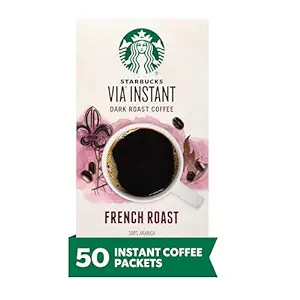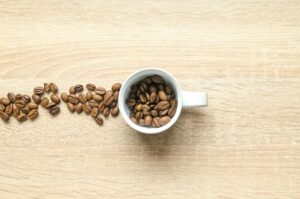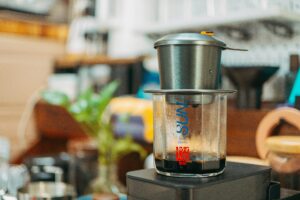Brewing the perfect cup of coffee is an art form that many coffee enthusiasts, health-conscious individuals, and home baristas strive to master. One of the most common questions among coffee lovers is, “How many tablespoons of coffee do I need for 6 cups?” While there are many variables that can influence the answer, there are general guidelines you can follow to ensure a consistently delicious cup every time.
In this comprehensive guide, we’ll explore the ideal coffee-to-water ratio, different brewing methods, and tips for achieving the perfect brew. We’ll also address some frequently asked questions to help you become a confident and knowledgeable home barista.
Table of contents
Understanding the Coffee-to-Water Ratio
The coffee-to-water ratio is crucial for brewing a balanced and flavorful cup of coffee. The standard ratio recommended by experts is 1:15 to 1:18, which means one part coffee to 15-18 parts water.
The Golden Ratio
The “Golden Ratio” for coffee is often cited as 1:17. This means using one part coffee to 17 parts water. For example:
- For 6 cups of coffee (assuming a standard cup is 8 ounces), you’ll need 48 ounces of water.
- Using the 1:17 ratio, you would divide 48 by 17, yielding approximately 2.8 ounces of coffee.
Since there are 2 tablespoons in an ounce, the calculation would be:
“`
2.8 ounces * 2 tablespoons = 5.6 tablespoons of coffee
“`
Therefore, for 6 cups of coffee, you would use around 5.6 tablespoons of coffee. You can round this up or down depending on your taste preference.
Adjusting for Taste Preference
While the Golden Ratio provides a good starting point, personal taste preference can vary. If you prefer a stronger cup, you might opt for a 1:15 ratio. Conversely, if you like a milder brew, a 1:18 ratio might be more suitable. Experimentation is key to finding your perfect balance.
Brewing Methods and Their Impact
Different brewing methods can affect how much coffee you should use. Here are some popular methods and their specific requirements:
Starbucks VIA Instant Coffee Dark Roast Packets

- French Roast
- Caffeinated
Drip Coffee Maker
A drip coffee maker is one of the most common brewing methods. To make 6 cups of coffee in a drip maker, use the following guidelines:
- Water: 48 ounces (6 cups)
- Coffee: 6 tablespoons (1 tablespoon per cup)
French Press
The French press is known for its rich and robust flavor. For a French press, the general recommendation is:
- Water: 48 ounces (6 cups)
- Coffee: 8-10 tablespoons (1.5-2 tablespoons per cup)
Pour-Over
Pour-over brewing allows for precise control over the brewing process. For 6 cups of pour-over coffee:
- Water: 48 ounces (6 cups)
- Coffee: 6-8 tablespoons (1-1.5 tablespoons per cup)
Espresso
Espresso requires a much more concentrated coffee-to-water ratio. For making 6 cups of espresso (considering a single shot as a cup):
- Water: 12 ounces (2 ounces per cup)
- Coffee: 6 tablespoons (1 tablespoon per cup)
Tips for Achieving the Perfect Brew
Freshness Matters
Always use fresh coffee beans. Grind them just before brewing to maintain maximum flavor and aroma. Store your beans in an airtight container in a cool, dark place.
Water Quality
Use filtered water to avoid any impurities that can affect the taste of your coffee. Water temperature should be between 195°F and 205°F for optimal extraction.
Consistent Grind Size
The grind size should match your brewing method. Coarser grinds are ideal for French press, while medium grinds work well for drip coffee makers. Fine grinds are best for espresso.
Clean Equipment
Ensure that your coffee maker, grinder, and other equipment are clean. Residue and oils from previous brews can alter the flavor of your coffee.
Precision
Use a kitchen scale for precise measurements. While tablespoons are convenient, a scale ensures consistency.
FAQs
How many tablespoons of coffee for 6 cups?
For 6 cups of coffee, a good starting point is 6 tablespoons of coffee. Adjust according to your taste preferences and brewing method.
Can I use a different ratio for different brewing methods?
Yes, different brewing methods can require different coffee-to-water ratios. For example, a French press may need more coffee than a drip maker.
What if my coffee tastes too strong or too weak?
If your coffee tastes too strong, reduce the amount of coffee or increase the amount of water. If it’s too weak, do the opposite. Adjusting the grind size can also help.
How important is water temperature?
Water temperature is crucial for coffee extraction. Ideally, it should be between 195°F and 205°F. Too hot, and you risk over-extraction; too cold, and under-extraction.
Should I pre-wet my coffee grounds?
Pre-wetting (or blooming) allows the coffee to de-gas and start the extraction process. It’s particularly useful for pour-over and French press methods.
How should I store my coffee beans?
Store coffee beans in an airtight container in a cool, dark place. Avoid refrigeration or freezing, as this can introduce moisture and impact flavor.
Conclusion
Mastering the art of brewing coffee involves understanding the coffee-to-water ratio, choosing the right brewing method, and paying attention to details like grind size and water quality. By starting with the recommended guidelines and making adjustments based on your preferences, you can enjoy a consistently delicious cup of coffee.
Remember, the journey to the perfect cup is filled with experimentation and personal discovery. Whether you’re a seasoned home barista or just starting out, these tips will help you brew with confidence and enjoy the rich, satisfying flavors of a well-made cup of coffee.
Happy brewing!






